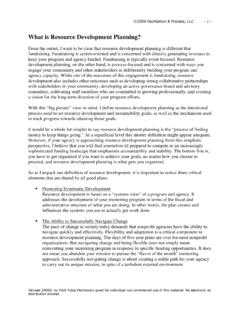Transcription of Change Management in the Public Sector
1 Change Management in the Public Sector Research Paper Submitted by: Amanda Selvadurai Research Supervisor: Professor Sherry Ferguson Department of Communication University of Ottawa Keywords: Change Management , Public Sector , organizational Change , evaluation organizational culture, organizational learning Amanda Selvadurai, Ottawa, Canada, 2013. Change Management in the Public Sector 2. Table of Contents Abstract ---------------------------------------- ---------------------------------------- ------------------ 3. Introduction---------------------------- ---------------------------------------- -------------------------- 4. Rationale for the Research Study ---------------------------------------- --------------------------- 7. Statement of Research Questions ---------------------------------------- --------------------------- 9.
2 Literature Review ---------------------------------------- ---------------------------------------- ------ 10. Approaches to Change Management ---------------------------------------- ---- 10. Change Specific to the Public Sector ---------------------------------------- ----- 18. Organizational Learning ---------------------------------------- ------------------- 23. Evaluation of Change Initiatives ---------------------------------------- ---------- 26. Theoretical Framework ---------------------------------------- --------------------------------------- 29. Methodology ---------------------------------------- ---------------------------------------- ------------ 33. Research Design ---------------------------------------- ------------------------------ 33. Data Collection and Analysis ---------------------------------------- -------------- 34.
3 Findings ---------------------------------------- ---------------------------------------- ------------------ 36. Conclusion and Recommendations ---------------------------------------- ------------------------- 43. Limitations ---------------------------------------- ---------------------------------------- -------------- 49. Future Research ---------------------------------------- ---------------------------------------- -------- 50. Conclusion ---------------------------------------- ---------------------------------------- --------------- 51. References ---------------------------------------- ---------------------------------------- --------------- 52. Annex ---------------------------------------- ---------------------------------------- --------------------- 57. Change Management in the Public Sector 3.
4 Abstract This study explored Public Sector employee perceptions regarding what strategies are required to create Change that achieves desired results in Public Sector organizations. The theoretical framework for this study is the eight step model for transforming organizations recommended by john P. Kotter in 1995. A qualitative research design was employed, involving in-depth interviews with six employees of the Canadian Public Service, to test the alignment of Kotter's eight step model with the perceptions of Public Sector employees. The study revealed that three of Kotter's eight steps were aligned with the perceptions of the Public Sector employees interviewed. These three steps were forming a powerful guiding coalition, creating a vision, and communicating the vision. Based on this alignment, further recommendations on leadership, senior/middle Management , development/communication of a vision, stakeholder involvement and training were made.
5 This study concludes with an identification of proposed future areas for research to complement the findings outlined. Change Management in the Public Sector 4. Introduction The ability to Change continually and successfully is considered to be essential to any organization's survival. The need for ongoing Change requires an organizational ability to learn on a continual basis in a coordinated and progressive way (Zorn et al., 2000). This has been widely considered to be a significant factor in the private Sector 's ability to achieve and maintain a competitive advantage and, in the same manner, the Public Sector 's ability to demonstrate continued value and relevance for citizens. Continuous learning processes with enhanced capacities for Change are linked to the importance of past experiences and the transfer of knowledge as factors in organizational learning (Allen et al.)
6 , 2007). Research by Diane Skinner (2004) brings these concepts together by noting the importance of knowledge acquisition processes and the need for organizations to share knowledge and learning as a way to maintain a competitive advantage (p. 140). A global trend has governments shifting to become the enabler of Public service rather than the provider (Thomas, 1996). This means that governments are often awarding contracts to private companies to carry out their services to employees and the Public rather than the services being carried out by Public servants themselves. This trend has also been characterized by the adoption of certain private Sector practices and concepts. Many of these changes have been the result of increased Public scrutiny with respect to the Public Sector . Critics have questioned the effectiveness of service delivery and the government's hold on Public and national resources.
7 As a result, there has been a shift in perceptions of the value of the Public service. Government organizations have moved from a focus on traditional Public administration practices to new Public Management , and the increased Public scrutiny has forced them to engage in Change initiatives aimed at adapting to the ever-changing external environment (Backoff & Nutt, 1993). Change Management in the Public Sector 5. The concepts of traditional Public administration and new Public Management will be defined later in this paper. Organizational Change is a process by which a large company or organization changes its working methods or aims. Reasons for desires to re-orient might include the need to develop and deal with new situations or markets (Beer, Einstat & Spector, 1990). Organizational Change is at the core of an organization's existence because it occurs with increasing frequency and magnitude in both the Public and private sectors.
8 Given this reality, the concept of Change Management has emerged as key for organizations. Change Management is defined as the coordination of a structured period of transition from situation A to situation B in order to achieve lasting Change within an organization (Bartkus, 1997). A large number of studies focus on Change Management approaches used in the private Sector and apply these same approaches to the Public Sector . However, applying private Sector approaches to the Public Sector often does not work, as the needs and characteristics of the Public Sector vary significantly. The following characteristics differentiate the Public from the private Sector : Public accountability, the need to demonstrate value for money, the meeting/managing of increased expectations regarding service delivery levels and quality to both the Public and politicians.
9 As well, the highly publicized resource allocation and critical political environment has put the Public Sector into a position in which adopting lasting Change becomes a challenge (Thomas, 1996). This study will aim to determine employee perceptions on what kinds of strategies are required to create Change that will achieve desired results in Public Sector organizations. The data obtained from interview participants will be primarily validated against Kotter's (1995) eight step model for transforming organizations. As a secondary aim, this study will also seek to determine employee perceptions as to what reasons cause Change initiatives to fail to achieve desired results in Public Sector organizations, as well as employee perceptions as to what characteristics (if any). Change Management in the Public Sector 6.
10 Of Public Sector organizations have an impact on the effectiveness of the implementation of Change in these organizations. The interview data will be primarily compared to Kotter's eight step model, as well as to the other theories contained in the literature review. This review was undertaken with the objective of validating the accuracy of employee perceptions and making recommendations for the types of strategies that could be used by Public Sector organizations to create Change that achieves desired results. Other concepts that will be referred to throughout this study are Change Management , organizational culture, Public Sector , organizational Change , organizational learning and evaluation. These terms are defined as follows for the purpose of this study: Change Management : Change Management is the coordination of a structured period of transition from situation A to situation B in order to achieve lasting Change within an organization (Bartkus, 1997).




